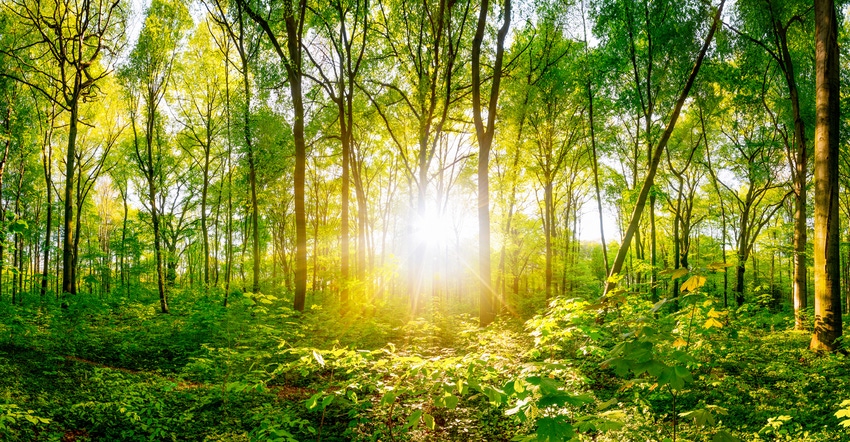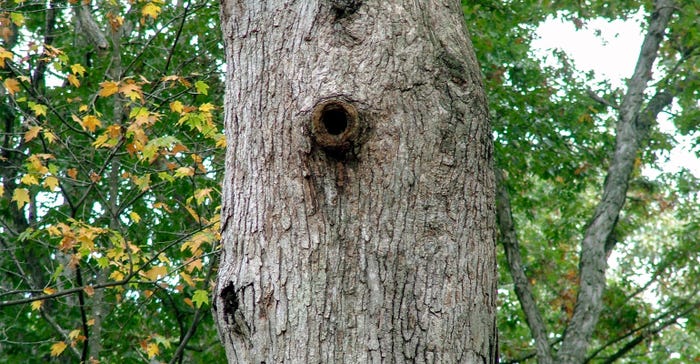September 8, 2017

Much of our Midwestern wildlife is dependent on woodlands for at least part, and maybe all, of its habitat needs. Proper woodland planning and management can enhance your woodland resource for improved wildlife habitat while at the same time increasing the value of your timber resources.
Basic wildlife habitat requirements include food, water, cover and space. Food and water are needed throughout the year, and habitat cover provides places for resting, rearing and protecting of young, escaping predators, and sheltering from adverse weather conditions. Space is important in providing a home range with enough room to meet basic needs, but also to avoid competition with others.
Many normal forest management practices can provide benefits to some wildlife species. For example, a very basic practice is keeping woodlands on the landscape. Larger blocks of woodland habitat, or patches of woodlands connected by wooded riparian buffers, windbreaks or other conservation covers, benefit wildlife by providing larger home ranges. In addition, protecting woodlands from livestock grazing or overgrazing provides valuable food and cover for wildlife, allows for plant and tree regeneration, and protects the soil from compaction and erosion that can be detrimental to tree growth and quality.
In some cases, thinning and harvesting may also improve wildlife habitat. Girdled or cut trees during stand thinning can be left to provide woody debris on the forest floor or standing deadwood. Deadwood provides several benefits, including food for insects and fungi that in turn help feed other wildlife. Decaying wood provides cavities for a variety of wildlife to nest and seek cover from predators. As the wood decays, it adds valuable nutrients and organic matter to the soil. Harvesting timber opens up the tree canopy, allowing for additional sunlight to reach the forest floor and encourage the growth and development of shade-intolerant tree species, as well as shrubs and forbs that provide additional wildlife food and cover.
 POTENTIAL: Tree cavities provide nesting opportunities and cover from predators for a variety of wildlife.
POTENTIAL: Tree cavities provide nesting opportunities and cover from predators for a variety of wildlife.

Similar benefits can be realized from tree tops left over from harvesting. Cutting and stacking tree tops to produce brush piles creates additional nesting and escape cover. From a timber management standpoint, trees left after harvesting will have additional crown space to grow more quickly and potentially produce more fruit or nuts. When choosing trees to thin or harvest, consider retaining a few trees of varying sizes with cavities in the trunk or branches that will act as den trees for cavity-nesting wildlife.
Woodland edges are also very important for food and cover. Woodland edges next to crop fields or pastures are called “hard” edges, meaning the woods meets the field like a wall. This edge provides less food and cover benefits than a “soft” edge, which has a variety of heights and densities of vegetation that allows for more sunlight exposure and a diversity of food and cover. Hard edges can be made softer by thinning existing trees and planting additional trees and shrubs along these edges.
For ideas and assistance in improving your wildlife management practices, consult with your local Extension office, land-grant university or department of natural resources for additional information.
Miller is a horticulture professor at Joliet Junior College, and a senior research scientist in entomology at The Morton Arboretum in Lisle, Ill. Email your tree questions to him at [email protected].
About the Author(s)
You May Also Like




